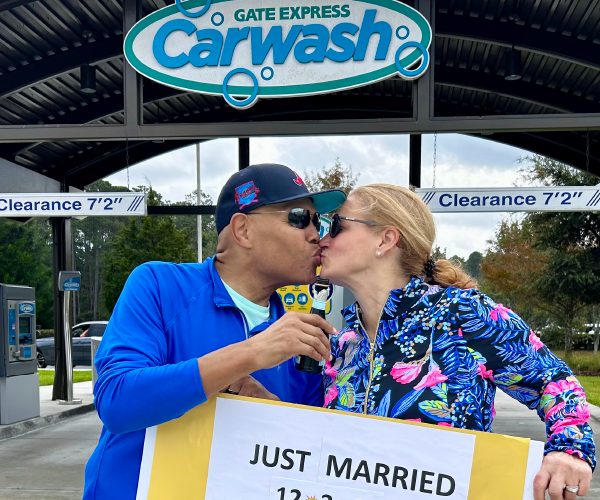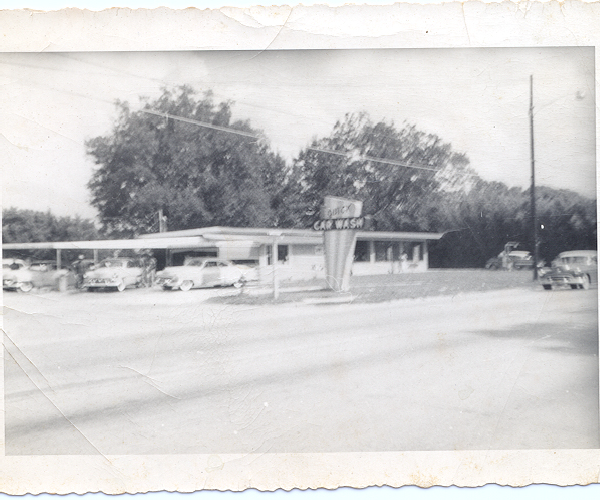
How Many Is Too Many?
April 10, 2023
7 minute ReadBy Tom Gresham
The question of how many car washes an area can support is an eternal one, and the answer can depend on a slew of factors and considerations that are both quantitative and qualitative, making the decision both a science and an art.
The car wash industry’s rapid growth has made the question more pressing for operators as prime locations grow more sought after and potentially crowded. Among the results of that growth is that some of the old ways of evaluating location density have evolved and perspectives have changed about consumers’ appetite for car washes and how many can thrive in the same competitive landscape.
“Statistics have proven that while more car washes are being built, more people are also washing their cars,” said Thomas Coffman, a partner with Miracle Car Wash Advisors.
Adam Garcia, founder and CEO of New Path Construction and Consulting, said the car wash industry is entering a new phase of competitiveness as the density of washes seems poised to grow.
“It’ll be interesting to see how some of these groups perform now that we’re seeing standalone car washes go up across the street from each other,” he said.

Lessons from other industries
Examples abound of competitors in a range of industries opening locations in close proximity to each other. The act can seem counterintuitive, but retail experts say nearby competing operations do not necessarily bring red flags to a potential new location. In fact, Garcia said, the presence of competitors in certain industries, such as the gas station field, can be a promising sign for future success. In its published guidance on site selection, Phillips 66 advises those considering sites: “Don’t be afraid of competition.”
“Healthy competition indicates that there is demand in the area,” according to the multinational energy company.
The reason that competing businesses with similar offerings frequently appear in relatively close proximity to each other — rather than spread evenly apart — can be explained in part by Hotelling’s Model of Spatial Competition, a theory that originated in the 1920s. Harold Hotelling, who created the theory, said, “When competing on location, each business wants the central point as it is the most strategic spot that allows it to be as close to as many customers as possible. Since every business has the same mindset, they will be competing with one another, which eventually causes similar businesses to end up in a cluster focused on one specific point.”
The marketplace is filled with examples of highly successful competitors that frequently locate near each other. For example, according to research by retail expert Marc Smookler conducted in Texas, CVS and Walgreens pharmacies were located an average drive time of just three minutes apart, Walmart and HEB (a major Texas grocery chain) were located a little more than three minutes apart and Home Depot and Lowe’s were spaced an average drive time of eight minutes apart.
Among the lessons that car washes should take from other industries on location density is that the higher the density of operators, the more you will need to separate yourself from competitors in distinctive ways within the general industry formula — the way that McDonald’s and Wendy’s differ from each other, Garcia said.
“They both provide burgers, they both provide fries, but there’s a nuance within each of those that would make people choose one over the other at different points in time,” Garcia said.
Similarly, Garcia said gas stations offer a telling example for car washes. When competitors choose to locate close to each other, they must fight to find an advantage just to hold their own. The competition can be too stiff for at least one of those involved, particularly if the customers do not merit the number of locations. The chief question in these more saturated markets then is if there is enough to go around for everyone.
“Gas stations have had to face the issue of, ‘If there are 30,000 cars on this street, but there's another guy on the cross section of that street, we may only capture half of that car count,’” Garcia said. “Then the question becomes, is that half good enough for your pro forma? That's the analysis that they have to start doing at that point.”
That level of competitiveness and high density of locations has pushed gas stations to raise their offerings, Garcia said, in areas such as membership perks, credit cards, interior design, drink selections, snacks and prepared food.
“People are really upping the game, and I think on the car wash side it’s going to have to be the same thing,” Garcia said. “There’s going to have to be some value-added service because if you want to have a car wash in a good area then chances are that someone else is going to be there. You’ve got to beat them or at least capture half of the volume, so how are you going to do that?”

Population and traffic
An old commonly cited metric for car wash density was that washes should be five miles apart — a measurement that experts say is outdated and lacks critical context, such as population and traffic considerations.
“If we have a market where we're highly populated with a high density there, then we can make a case that we can build multiple express exterior car wash locations relatively close to each other,” said Rafael Navarro, director of consulting services for Sonny’s.
Fewer shorthand metrics are used now, as owners favor a sophisticated study of a range of factors. For instance, Navarro said the capability to drill into census data is critical to understanding locations and looking beyond surface metrics to analyze valuable demographic information. How many potential marketing targets are there? What’s the median household income? How many retirees are there?
“A lot of variables from a census data perspective can help paint a better picture for somebody that's looking to build in a market,” Navarro said.
When weighing population, Navarro said a general rule of thumb is that you need at least 20,000 to 25,000 people to support one express car wash, but operators should consider not only how many car washes are in the area but the identity of them.
“If you get into a market with 60,000 people and four express washes — maybe it’s a Tidal Wave or a Mr. Car Wash — now not only do you have more players in that market than it can support, you have heavy players that are driving home heavily their monthly memberships subscription,” Navarro said. “That makes capturing a little piece of that market share that much more difficult.”
In addition to population, traffic count is a key piece of the puzzle. How important? ICA’s 2022 Car Wash Consumer Study found that 77% of customers surveyed found out about the wash that they currently use because they drove past it.
In that vein, car washes should seek locations with “valuable” activity in high-volume areas that attract customers who might be quick to add a car wash visit to their errands, such as in weekly needs shopping areas with large centerpiece stores such as Walmart, Target or major groceries, Navarro said. After all, convenience is the primary driver of preference for one car wash over another, according to the ICA Car Wash Consumer Study.
“If you don't have people driving by a site, nobody's going to see it and you're not going to be able to build brand awareness as quickly as you would like,” Navarro said.
Forecasting density in a fluid marketplace
Anticipating population growth and the pace of development is invaluable, and sophisticated technology has transformed that evaluation. Coffman, for instance, said Miracle uses “data- driven technology to understand the greatest pockets of growth and retail density to find the new centers of gravity for people to wash their cars.”
As Garcia said, “Density is important, but the forecasted density is sometimes even more important.”
The competitive dynamics of a site can change quickly, too.
“Business verticals that are searching for prime locations take into consideration competition/population ratio, but it is inevitable that competition will continue to develop,” Coffman said. “Identifying the right piece of real estate is hard enough, but much harder if competition is building down the street right before you break ground on a site.”
The market is so competitive that there is pressure to move quickly when owners identify a good site because somebody else is liable to see the value that you see and come along and snatch it up, Navarro said.
As a result, Navarro said too many owners select a bad location for their car wash out of an urgency to participate in a booming industry.
“Obviously, good locations are harder to find, but going into a bad location, you're going to pay the price for however long you're tied to it,” Navarro said. “The biggest thing that I tell folks is to have patience.”
Garcia said the car wash industry’s evolving approach to density is being watched closely.
“I think everybody's looking and saying, ‘Hey, is this gonna work?’” Garcia said. “And, if it does, I think you’re going to see a massive boom in car wash construction, even more so than today, because we will see that more locations can be supported than we knew.”








